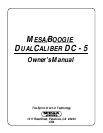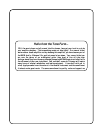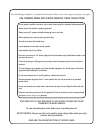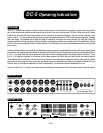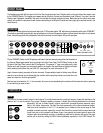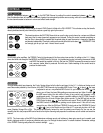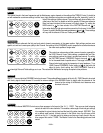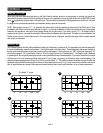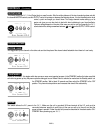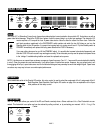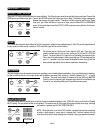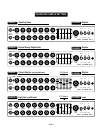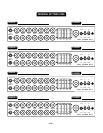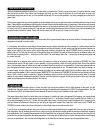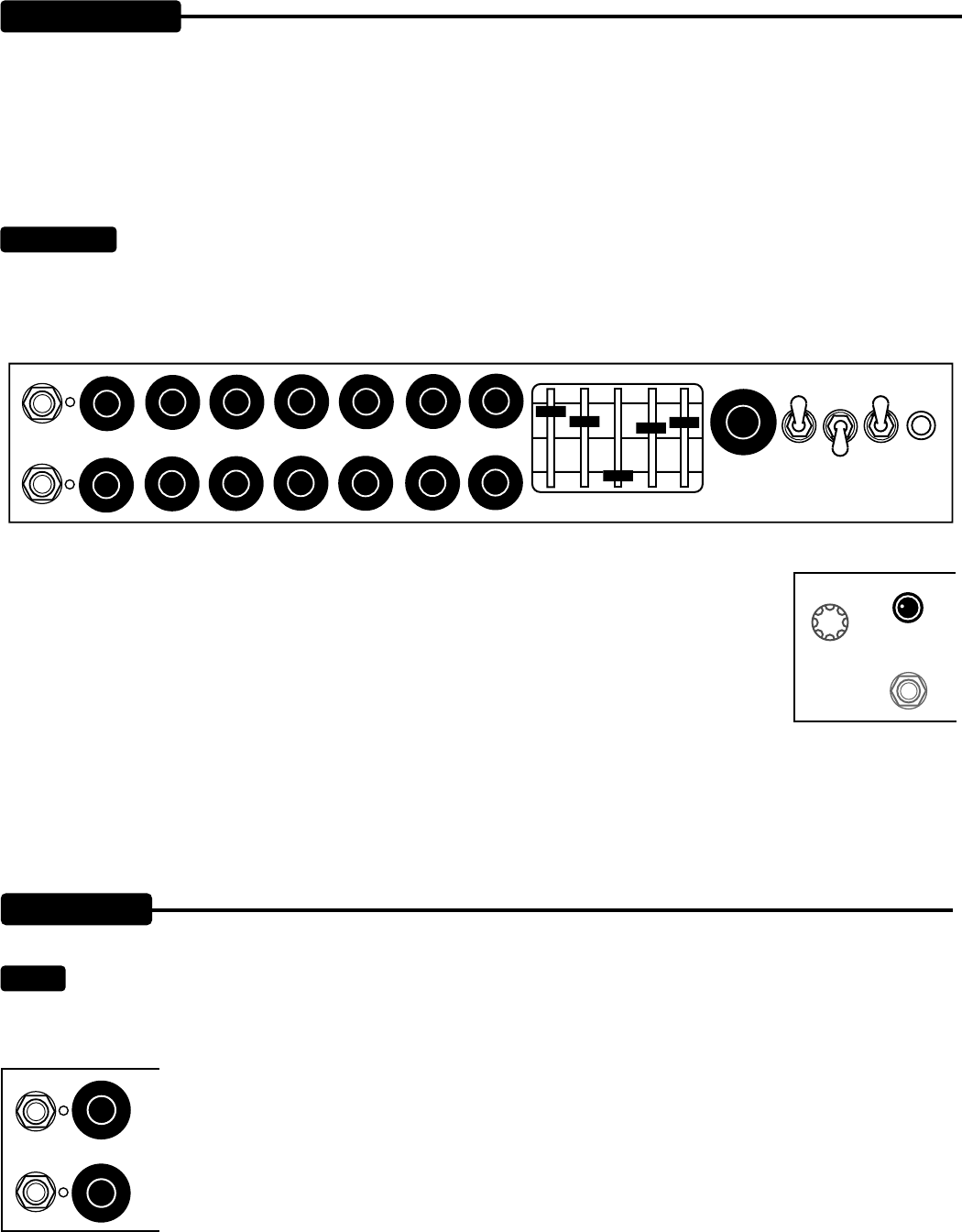
PAGE 2
First familiarize yourself with the layout of the Front Panel and locate the Lead / Rhythm switch on the right side of the chassis, next
to the STANDBY Switch. This toggles you between the top (Rhythm) Channel and the bottom (Lead) Channel. If you don’t have the
Rhythm/Lead Footswitch connected, this switch will activate the channel switching function. Before we get too critical about each
control, let’s audition the two channels with a basic clean setting in the Rhythm Channel and a fairly high gain overdriven sound in the
Lead Channel.
Connect your favorite guitar to the instrument input jack. FLIP the power switch “ON” while leaving the standby switch set to “STANDBY”.
(It’s always a good idea to practice this start up procedure) as at least 30 seconds of warm-up time lessens the shock on cold power
tubes, thus prolonging their life substantially. Next set the controls and the Graphic EQ per this example:
Flip the STANDBY Switch to the ON position and listen to the two channels using either the footswitch or
the Channel Select toggle switch found on the right side of the Front Panel. The EQ Rotary Control on the
left side of the Rear Panel, controls the EQ assignment. This popular “V” type curve works well in both
Rhythm and Lead Channels, but most players tend to use it more in the Lead Channel, finding the Rhythm
plenty sweet by itself without the use of the EQ. (see page 5 for more information on EQ)
Again, these are merely examples of the two channels. Experimentation leads to finding many different
sounds in each channel and understanding the controls and the way they interact, can make this much
easier and more fun. Now lets get specific!
Now that you have heard the DC-5’s two channels, let’s move on to understanding the controls and their interactive roles in achieving
the sounds that you want to hear.
This is by far the most powerful control in each channel. It not only determines the overall gain amount, shape and sensitivity of the
channel...but it is also a powerful Tone control. Generally speaking, whatever is dialed here ultimately determines the channels
personality. Set low, it allows cleaner, brighter sounds with enhanced dynamic response, espe-
cially in the higher frequencies. Set high the whole personality of the channel becomes darker,
fatter and more overdriven. In the DC-5 we worked hard to make sure the entire range of Gain
available is usuable and more importantly, musical. Don’t think for a moment that this simple one knob
layout limits you as to the amount and texture of gain. Long neurotic hours were spent to ensure the
ranges of gain were stylistically accurate. It’s probably a good time to mention that most of the great
sounds can be found by setting the GAIN Control moderately, especially in the LEAD Channel. For
FRONT PANEL:
POWER-UP:
TREBLE MID BASS PRESENCE REVERB
MASTER
OUTPUT
LEVEL
DC-5
C
ALIBER
D
UAL
STANDBY POWERLEAD
ON ONRHYTHM
GAIN
PULL BOOST
INPUT
FOOT
SWITCH
80
240
750
2200 6600
5
63
4
2
4
5
6
55
6
224
2
EQ SELECT
FTSW EQ/REV
OUT
RHY
LEAD
FT SW
IN
FUSE
1.25A
2.5A SB
CONTROLS:
GAIN:
PULL BOOST
INPUT
FOOT
SWITCH
GAIN
5
4



